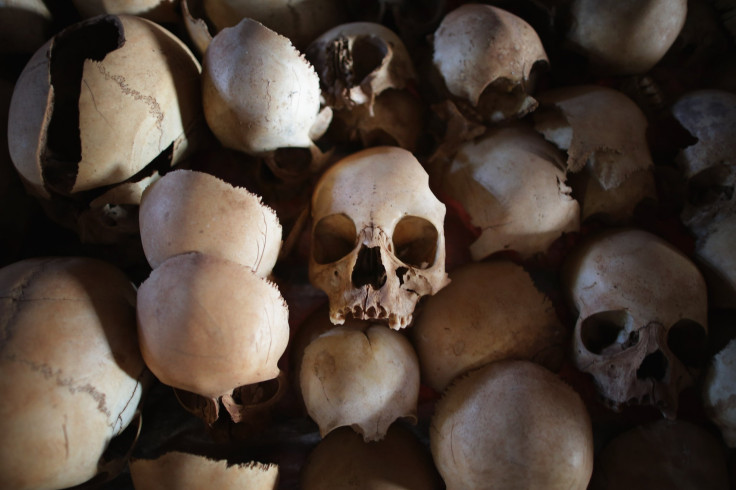What Is Genocide? California University Grapples With Clash Between Native-American Student, History Professor Over This Question

Sacramento State University said Monday a student who firmly disputed a history professor’s interpretation of genocide was not expelled from the course for her conduct as initially reported. History professor Maury Wiseman ended class early Friday after Native-American student Chiitaanibah Johnson allegedly hijacked the class by presenting her argument for why genocide is an apt description of what happened to native people at the hands of European colonizers and their descendants.
“The university would like to make it clear that our student, Chiitaanibah Johnson, was not expelled or disenrolled from this history course. Under university policy, a professor cannot unilaterally disenroll a student from a class,” said a statement released Monday by President Robert S. Nelsen, who said he is investigating what happened before taking any action.
Johnson told Indian Country Today Media Network in a report published Sunday Wiseman told the class he doesn’t believe the subjugation and treatment of the native population rose to the level of genocide.
“He was talking about Native America and he said the word genocide,” said Johnson. “He paused and said: ‘I don't like to use that word because I think it is too strong for what happened,’ and ‘Genocide implies that it was on purpose and most native people were wiped out by European diseases.' "
The debate over how to interpret the treatment of Native Americans flared on the national stage when the Republican National Committee passed a resolution in August 2014 demanding an investigation into advanced high school history classes for what the RNC called a biased interpretation of America’s past. They criticized the way the curriculum focused on the negative effects on Native-American populations from the western expansion of white settlers. So far, no public school curriculum teaches students Native Americans were victims of genocide.
@sacstate Genocide denial is bigotry not academia. If you endorse it by keeping #MauryWiseman then it is also racism https://t.co/joZNOEhclP
— Walalaflower (@saveelati) September 7, 2015Genocide is typically ascribed to events like Russia’s Great Purge of the 1930s (1.2 million killed), the Jewish Holocaust of the 1940s (6 million killed), Cambodia’s Khmer Rouge “purification” campaign in the 1970s (2 million killed) or the Rwandan slaughter in the 1990s (1 million killed). These genocides are characterized by vast amounts of organized mass killing within short periods of time.
A debate lingers in the U.S. over how to characterize the decimation of the native population. By some estimates, the North American native population dropped from 12 million in 1500, eight years after Christopher Columbus accidentally bumped into the Americas on his way to Asia, to fewer than 300,000 by 1900. Most of those deaths happened early and were biological -- Native Americans didn’t have immunity to diseases the European colonizers carried with them.
@48thAve Perhaps #MauryWiseman will allow Raphael Lemkin to explain it: CF Revised Outline for Genocidal Cases http://t.co/HjoxxnqwwY
— Elizabeth Ferrari (@48thAve) September 7, 2015But proponents of the genocide line point out the definition of genocide includes certain aspects of what was inflicted on Native Americans, including cultural repression in Native-American boarding schools and the forced removal of entire populations from their native lands.
The United Nations defines genocide as "any of the following acts committed with intent to destroy, in whole or in part, a national, ethnical, racial or religious group, as such: killing members of the group; causing serious bodily or mental harm to members of the group; deliberately inflicting on the group conditions of life calculated to bring about its physical destruction in whole or in part; imposing measures intended to prevent births within the group; [and] forcibly transferring children of the group to another group."
#NativeGenocideHappened #MauryWiseman Bounty prices offered by colonies for Natives pic.twitter.com/tlhnbwYKGZ
— Dani (@xodanix3) September 7, 2015© Copyright IBTimes 2024. All rights reserved.












